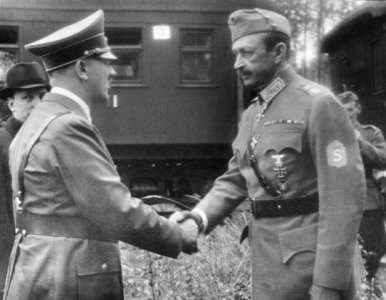G
guest0001
Guest
Two Companies from the Finnish Infantry Regiment 65 engaged the Dolin's Ski Brigade in the western end of the Vetko isthmus, Kuhmo municipality, on Feb 14 1940. Finnish assault was stopped in the outskirts of the Vetko village, the fierce infantry fire being very accurate.
Finns were reinforced with a field cannon in the early evening and using it in direct firing the resistance collapsed. After the fight some 400 fallen were found from the enemy positions. Finnish losses were six fallen and 27 wounded.
Meanwhile, on the Karelian Isthmus the Finns retreat from the Lähde sector, Mannerheim Line, manning the secondary defense line. Fortunately the enemy assaults were paused there at the time.
In the set of pics we see some Finnish wilderness warriors assaulting, pics are not dated or located.
SA-kuva photos fu_2698, fu_2655 and fu_2654



Finns were reinforced with a field cannon in the early evening and using it in direct firing the resistance collapsed. After the fight some 400 fallen were found from the enemy positions. Finnish losses were six fallen and 27 wounded.
Meanwhile, on the Karelian Isthmus the Finns retreat from the Lähde sector, Mannerheim Line, manning the secondary defense line. Fortunately the enemy assaults were paused there at the time.
In the set of pics we see some Finnish wilderness warriors assaulting, pics are not dated or located.
SA-kuva photos fu_2698, fu_2655 and fu_2654








